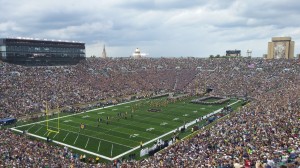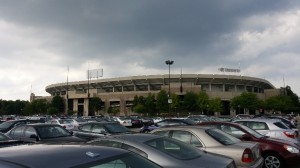A post from our student blogger Megan
If you know me you know that I love law. I love talking about it, studying it, and practicing it—and I especially love statutory law. I know, that sounds riveting, right? About now you’re probably saying, uh…no. But trust me on this; the relationship between two United States Code sections that govern patent law is actually pretty cool. Patent attorneys and agents rely on statutes, or laws, that are enacted by the legislature. Specifically, Title 35 of the United States Code, provides the statutes that cover patent law.
35 USC §101 is a great starting point when drafting or examining a patent application. This statute can be thought of as an initial hurdle to obtaining a patent because it controls what material can receive patent rights and what standard must be met in order for it to be considered patent eligible. 35 USC §101 states that a “process, machine, manufacture, or composition of matter … or any improvement thereof” may be patented. In addition, besides meeting the statutory material criteria, section 101 also states that a patentable concept must be “new and useful” as well. Therefore, 35 USC §101 tells us that there is a two-part analysis to examining whether an invention or method is patentable or not: does it meet the statutory criteria of items that can be patented and does it have basic utility?
Through the MSPL Patent Law and Prosecution class, we have learned that once you fulfill the statutory obligations of 35 USC §101, you may now move to an analysis under 35 USC §112(a). These two statutes weave together some very basic patent concepts. While section 101 governs what inventions are patentable, section 112(a) administers what contents must be contained in the specification of a patent application. If you think about the specification in terms of anatomy, it is the skeleton and muscle of the entire application: it contains the description and claims which give life to the patent by making it legally operable.
Now let’s take a closer look at section 112(a). While at first glance this section looks like a run-on sentence packed with too much legalese, it can actually be dissected into three fairly basic concepts. First, the specification must have a “written description of the invention.” Second, the written description must be enabling, or in other words, a “person skilled in the art” must be able to make and use the invention based on what is described in the specification. Finally, 112(a) mandates that the specification of a patent application must contain the “best mode.” This means that the specification must include, in the inventor’s opinion, the best way to carry out the invention at the time the application is filed.
So how do 35 USC §101 and §112 relate to one another? Simply put, if you fail to state the utility of your invention in your specification then there is no way that you can enable anyone to practice it. Several United States courts have interpreted this connection and reiterate that if the invention utility is not enumerated under 35 USC §101, then it is not possible to “enable one of ordinary skill in the art to use the invention under 35 USC §112.” In re Kirk, 376 F.2d 936, 942, 153 USPQ 48, 53 (CCPA 967).
Patent laws are kind of like spiders’ webs: alone, a single statute is a long string of words that seem to have no connection to anything else, but when you weave the statutes together they form an intricate, distinct and really neat body of law that’s quite fascinating to look at. The interplay of statutes is only the beginning, though. There are the Code of Federal Regulations and the Manual of Patent Examining Procedure sections that facilitate patent law as well. We’ll delve into those at a later date so stay tuned.

